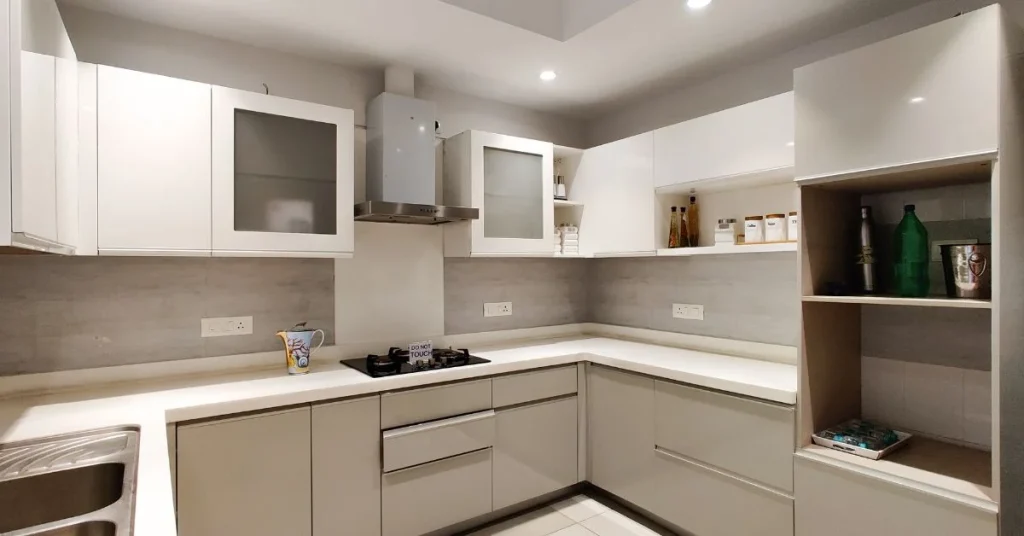Why the Kitchen Deserves the Upgrade
The kitchen has earned its place as the heart of the home, and for many households, it’s the most important room in the house when it comes to comfort, function and style. But a low-end kitchen – whether outdated, poorly laid out, or lacking in quality finishes – can let the entire home down. The good news is that with some smart choices, thoughtful updates and an eye for detail, any kitchen can be transformed from basic to beautiful. A high-end kitchen doesn’t just look stunning – it also elevates how you live, cook and entertain.
It Starts with the Layout
No matter how glossy the finishes, a poorly planned kitchen will always feel low-end. One of the most effective ways to give your kitchen a premium feel is to re-evaluate its layout. High-end kitchens are designed around ease of use and flow. Whether it’s ensuring there’s enough prep space between the sink and hob, allowing space for multiple people to move around, or repositioning appliances for better practicality, upgrading the layout changes everything. A more open-plan or ergonomic kitchen can immediately feel more expensive, even before any aesthetic upgrades are made.
High-End Worktops Make All the Difference
Inexpensive laminate worktops tend to show their age quickly, whereas materials like quartz, granite or even solid timber instantly elevate the feel of the space. High-end worktops not only look the part but also perform better over time. They’re more resistant to scratches, stains and heat, which means they stay looking newer for longer. Quartz, in particular, offers a sleek look with excellent durability, while granite adds natural variation and a sense of luxury. Upgrading this single element can completely transform how a kitchen is perceived.
Cabinetry That Looks and Feels the Part
Low-end kitchens often use flat-pack cabinets with cheap veneers, plastic edging and poor internal storage. High-end kitchens, on the other hand, tend to feature solid or painted timber cabinetry, soft-close mechanisms and bespoke touches that fit the space perfectly. Even if a full cabinet replacement is outside the budget, replacing the doors or upgrading the handles can go a long way. A neutral palette, matte finishes or even a bold dark tone in the right setting can immediately give the impression of luxury and thoughtfulness.
The Power of Lighting
One of the key things that separates a high-end kitchen from a basic one is the lighting. Kitchens that rely solely on a single central ceiling fixture tend to look dated and feel gloomy. High-end kitchens use layered lighting — combining task lighting under cabinets, ambient lighting for mood, and statement lighting above islands or dining areas. Simple additions like LED strips under units or swapping a basic pendant for a designer piece can make an immediate impact.
Built-In Appliances Add a Seamless Look
Nothing makes a kitchen look more dated than freestanding appliances in mismatched finishes. Upgrading to integrated appliances not only gives the space a streamlined look but also creates a cohesive, high-spec feel. A built-in oven at eye level, an induction hob, or even a hidden dishwasher behind a cupboard door can add subtle touches of luxury without requiring a full kitchen redesign. Many high-end looks are about clever concealment and clean lines — built-in appliances help achieve just that.
Details That Elevate
It’s often the small details that complete a high-end kitchen look. Features like matching plug sockets and switches, high-quality tap fittings, and modern splashbacks all signal that thought has gone into the design. Replacing old plastic or chrome fixtures with brushed brass or matte black can immediately modernise the space. Choosing a splashback in glass, natural stone or tiled with interesting textures helps define the kitchen’s character and adds depth.
Flooring That Ties It All Together
Old, tired flooring will drag down even the most beautiful cabinetry. High-end kitchens often feature engineered wood, stone tiles or large-format porcelain tiles that complement the rest of the home. These materials not only look expensive — they’re built to last. A continuous floor finish from kitchen into living or dining spaces can also help open up the space and make it feel like part of a larger, more luxurious layout.
Storage that Works Smarter
Part of what sets a high-end kitchen apart is its ability to be clutter-free. Built-in storage solutions, like larder pull-outs, corner carousels and hidden bins, help keep surfaces clean and organised. This sort of intelligent storage is rarely found in low-end kitchens, which often make do with awkward cupboard spaces and minimal internal fittings. By investing in bespoke joinery or clever cabinet fittings, you can achieve a kitchen that not only looks better but functions better too.
Finishing Touches and Personal Style
Finally, a high-end kitchen should reflect the character and taste of those who use it. Decorative open shelving, elegant bar stools, ceramic planters or curated cookbooks can all bring life to the space. High-end kitchens don’t need to feel clinical — in fact, the most luxurious spaces feel warm, welcoming and lived-in. The difference lies in quality, not clutter.
A Kitchen That Adds Lasting Value
Transforming a kitchen from low-end to high-end doesn’t always mean starting from scratch. With a thoughtful combination of layout improvements, better materials, clever upgrades and attention to design detail, any kitchen can be elevated. Not only does this improve how the space looks and functions day-to-day, but it also adds real value to the property, making it more desirable to future buyers. For many homeowners, that makes the investment well worth it.


